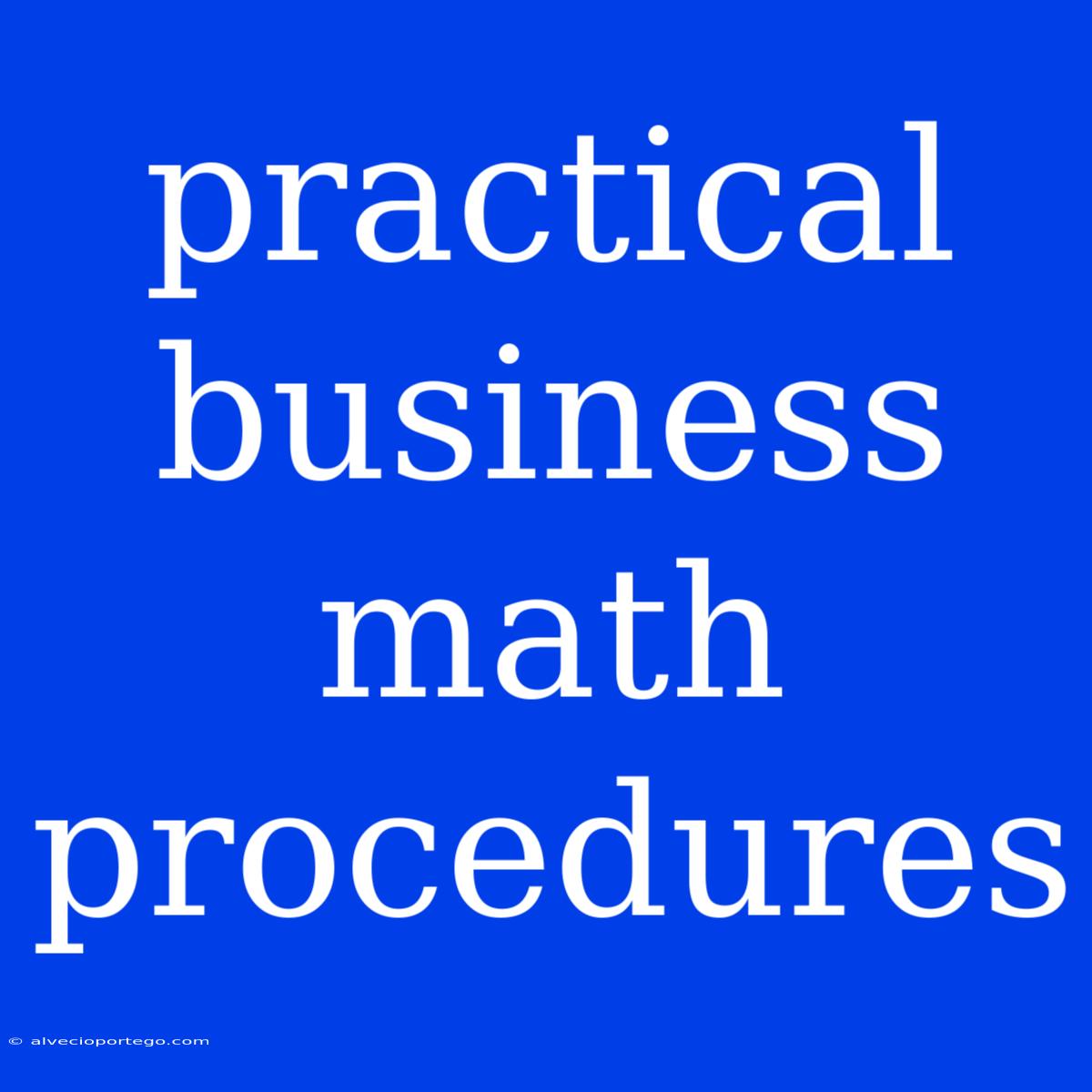Practical Business Math Procedures: A Guide for Success
In the world of business, numbers are king. From calculating profit margins to analyzing sales data, a solid understanding of practical business math procedures is crucial for success. This guide will explore some key areas of business math, offering practical examples and insights to help you navigate the world of financial decision-making.
1. Understanding Financial Statements
a) Income Statement:
The income statement, also known as the profit and loss (P&L) statement, provides a snapshot of a company's financial performance over a specific period. It outlines revenues earned, expenses incurred, and ultimately, the resulting net income or loss.
Key Formula:
- Net Income = Total Revenue - Total Expenses
Example: A company generates $100,000 in revenue and incurs $70,000 in expenses. Their net income is $30,000.
b) Balance Sheet:
The balance sheet provides a snapshot of a company's financial position at a specific point in time. It displays assets (what the company owns), liabilities (what the company owes), and equity (the difference between assets and liabilities).
Key Equation:
- Assets = Liabilities + Equity
Example: A company has $150,000 in assets, $50,000 in liabilities. Their equity is $100,000.
c) Cash Flow Statement:
The cash flow statement tracks the movement of cash in and out of a company over a period. It analyzes cash flow from operating activities, investing activities, and financing activities.
Key Sections:
- Operating Activities: Cash flows from day-to-day operations.
- Investing Activities: Cash flows from acquiring or selling long-term assets.
- Financing Activities: Cash flows from debt, equity, and dividends.
2. Calculating Profit Margins and Ratios
a) Gross Profit Margin:
This metric measures the percentage of profit generated from each dollar of sales revenue after deducting the cost of goods sold (COGS).
Formula:
- Gross Profit Margin = (Gross Profit / Revenue) x 100%
Example: A company has a revenue of $100,000 and a COGS of $60,000. Their gross profit margin is 40% (($100,000 - $60,000) / $100,000).
b) Net Profit Margin:
This metric measures the percentage of profit generated after all expenses are deducted from revenue.
Formula:
- Net Profit Margin = (Net Income / Revenue) x 100%
Example: A company has a net income of $20,000 and a revenue of $100,000. Their net profit margin is 20%.
c) Return on Investment (ROI):
This metric measures the profitability of an investment.
Formula:
- ROI = (Net Profit / Investment Cost) x 100%
Example: A company invests $100,000 in a new project and generates a net profit of $25,000. Their ROI is 25%.
3. Understanding and Managing Debt
a) Debt-to-Equity Ratio:
This metric shows the proportion of debt financing used compared to equity financing.
Formula:
- Debt-to-Equity Ratio = Total Debt / Total Equity
Example: A company has $50,000 in debt and $100,000 in equity. Their debt-to-equity ratio is 0.5.
b) Interest Coverage Ratio:
This metric shows the company's ability to cover interest payments with its earnings before interest and taxes (EBIT).
Formula:
- Interest Coverage Ratio = EBIT / Interest Expense
Example: A company has an EBIT of $100,000 and an interest expense of $20,000. Their interest coverage ratio is 5.
4. Forecasting and Budgeting
a) Sales Forecasting:
Predicting future sales is essential for budgeting and planning.
Techniques:
- Trend Analysis: Analyzing historical sales data to identify trends.
- Market Research: Gathering insights into market conditions, competitors, and customer behavior.
b) Budgeting:
Developing a budget helps allocate resources efficiently and control expenses.
Key Components:
- Revenue Budget: Projected revenue based on sales forecasts.
- Expense Budget: Breakdown of estimated expenses by category.
5. Essential Business Math Tools
- Spreadsheets (e.g., Microsoft Excel): Powerful tools for data analysis, calculations, and charting.
- Accounting Software: Automates accounting tasks, simplifies financial reporting, and provides valuable insights.
- Financial Calculators: Streamline complex calculations for loan amortization, future value, and other financial scenarios.
Conclusion
By mastering these practical business math procedures, you can gain a competitive edge in the business world. From understanding financial statements to calculating key ratios and managing debt, these skills are essential for informed decision-making and achieving your business goals. Remember to stay updated on the latest trends and technologies to optimize your financial understanding and success.

